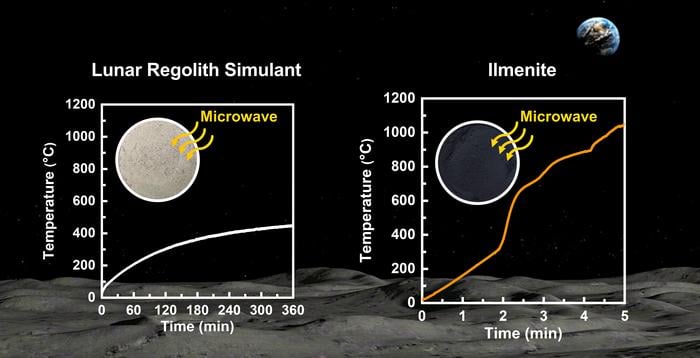NASA’s Artemis program aims to establish a lunar base, but the reality of building a moon base differs from science fiction. Transporting construction materials from Earth to the Moon is expensive and time-consuming, so using local resources is crucial. One promising method is microwave sintering, which solidifies lunar soil below its melting point. The Korea Institute of Civil Engineering and Building Technology (KICT) is researching this technique.
Creating Bricks from Lunar Soil
The KICT research team, led by Dr. Hyu-Soung Shin, is studying microwave-sintered lunar soil bricks. Similar to firing ceramics, the process raises the temperature to create solid bricks with a strength comparable to concrete. Microwave heating depends on the material’s dielectric properties, so understanding how lunar soil interacts with microwaves at different temperatures is essential.
The Key Role of Ilmenite in Microwave Sintering
The researchers investigated the dielectric properties of Korean Lunar Simulant (KLS-1) and ilmenite (iron titanate) at various temperatures. Ilmenite, a mineral abundant on the lunar surface, strongly interacts with microwaves due to its unique crystal structure, enabling rapid heating. Dr. Young-Jae Kim from the KICT stated, “This research is expected to be a crucial foundation for the development of microwave technology for future lunar exploration and lunar base construction.”
Using ilmenite as a heating element in microwave sintering allows for efficient and rapid production of construction materials on the Moon. This study, conducted under KICT Research Programs funded by the Ministry of Science and ICT, lays the groundwork for future lunar base construction.
For more information, please refer to the research article “Construction and Building Materials” published in the journal Construction and Building Materials on June 14, 2024.


